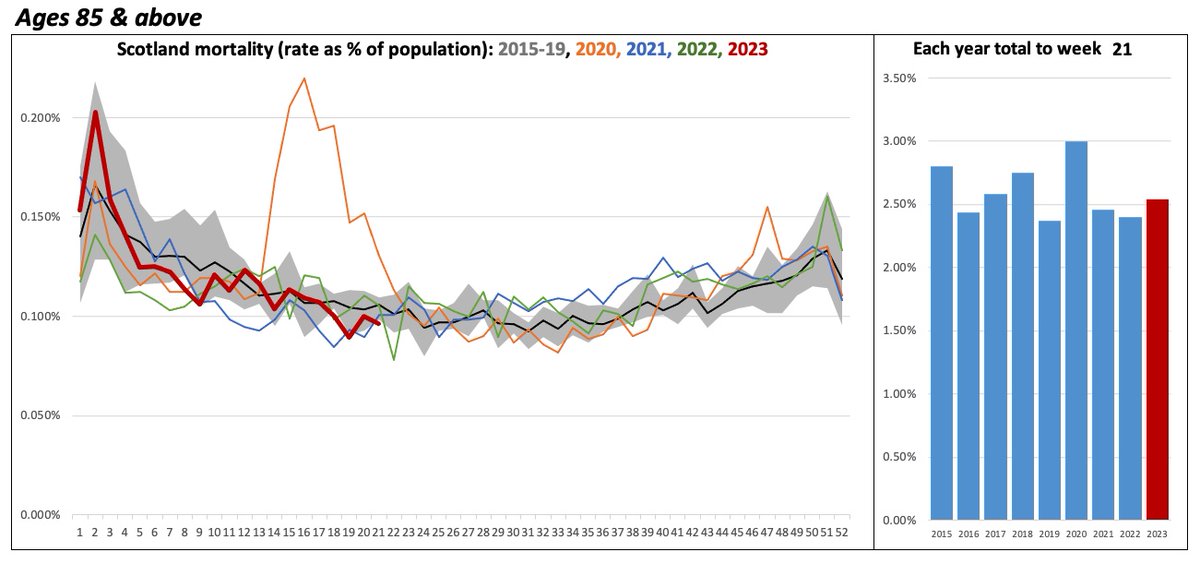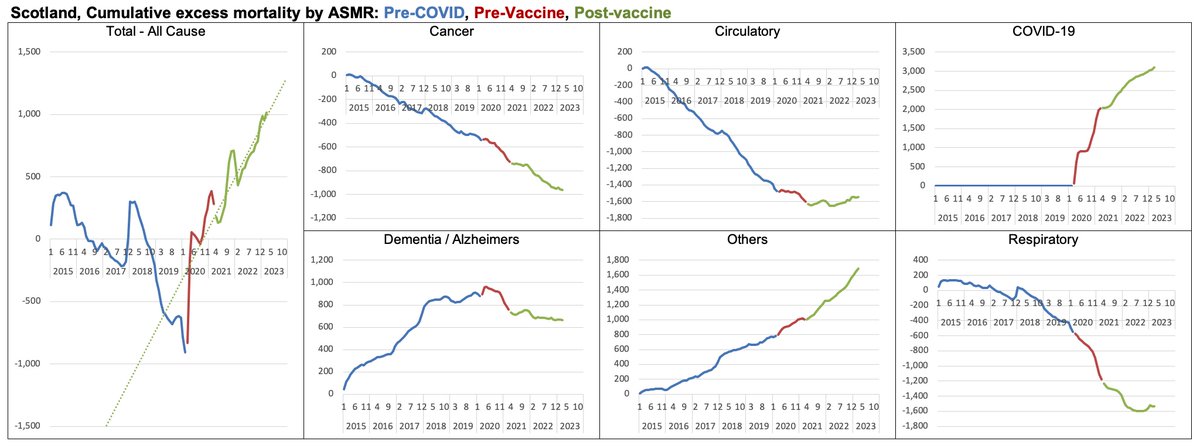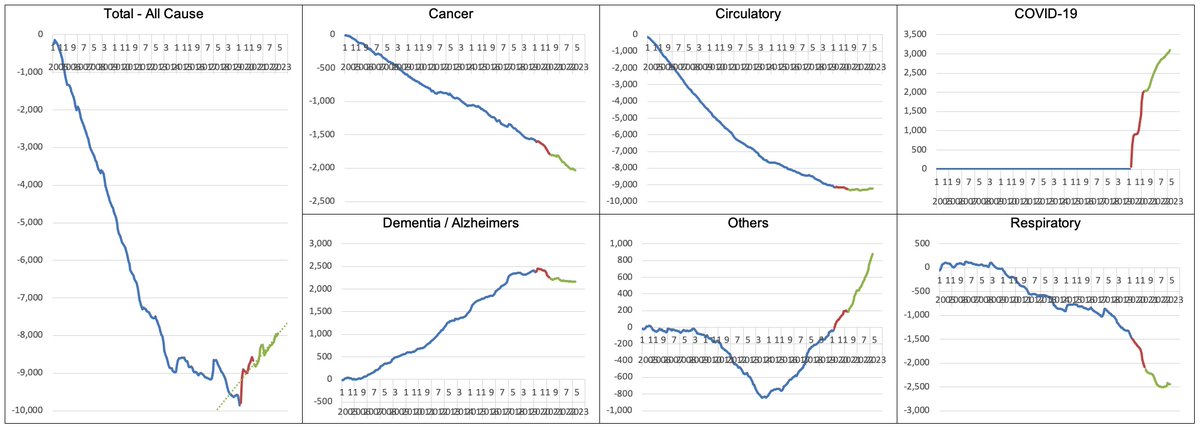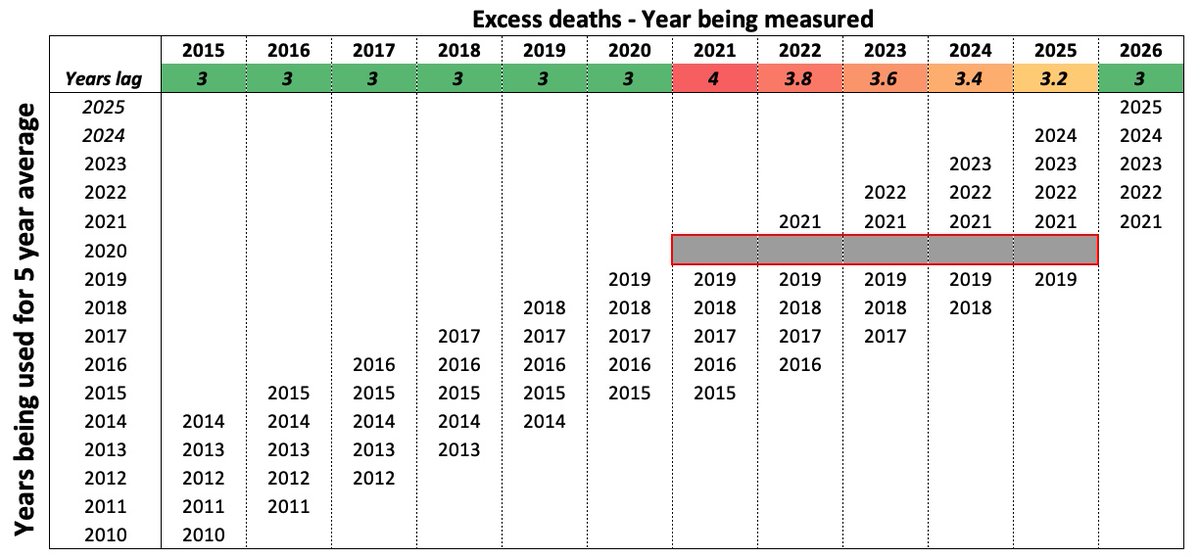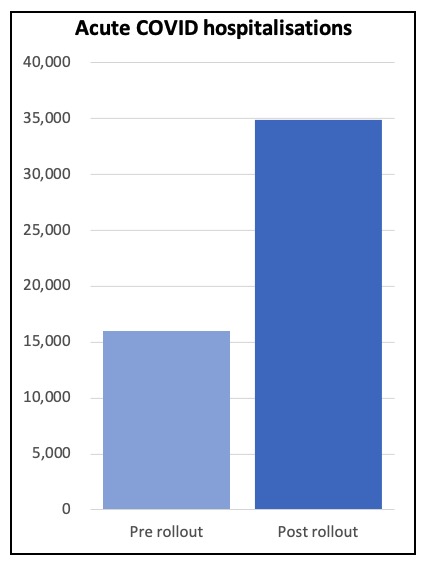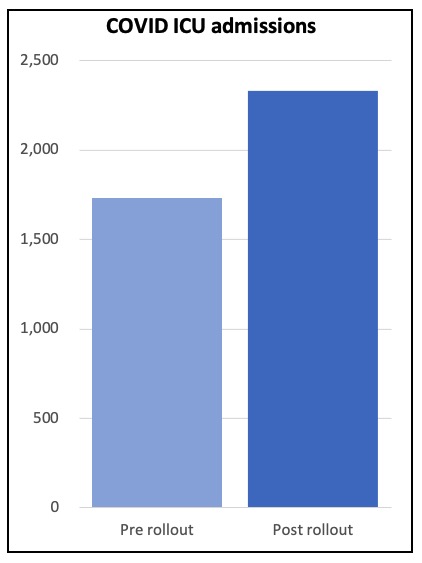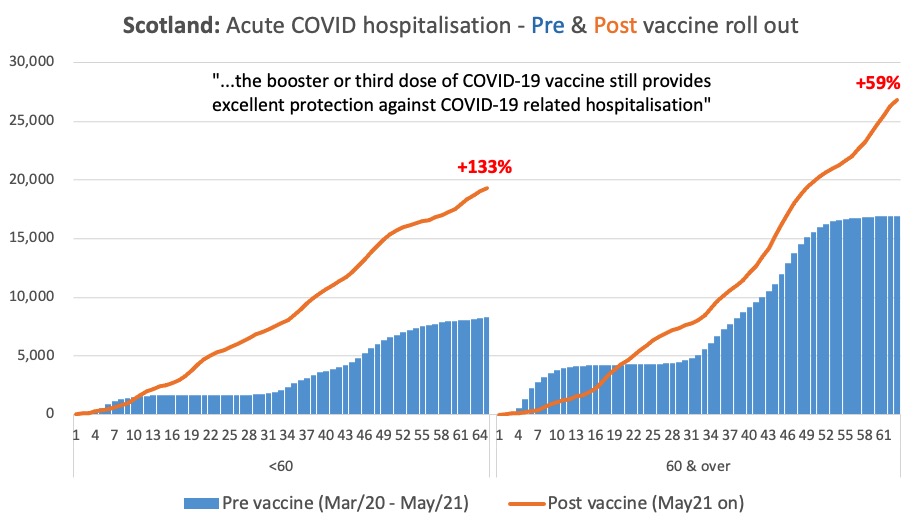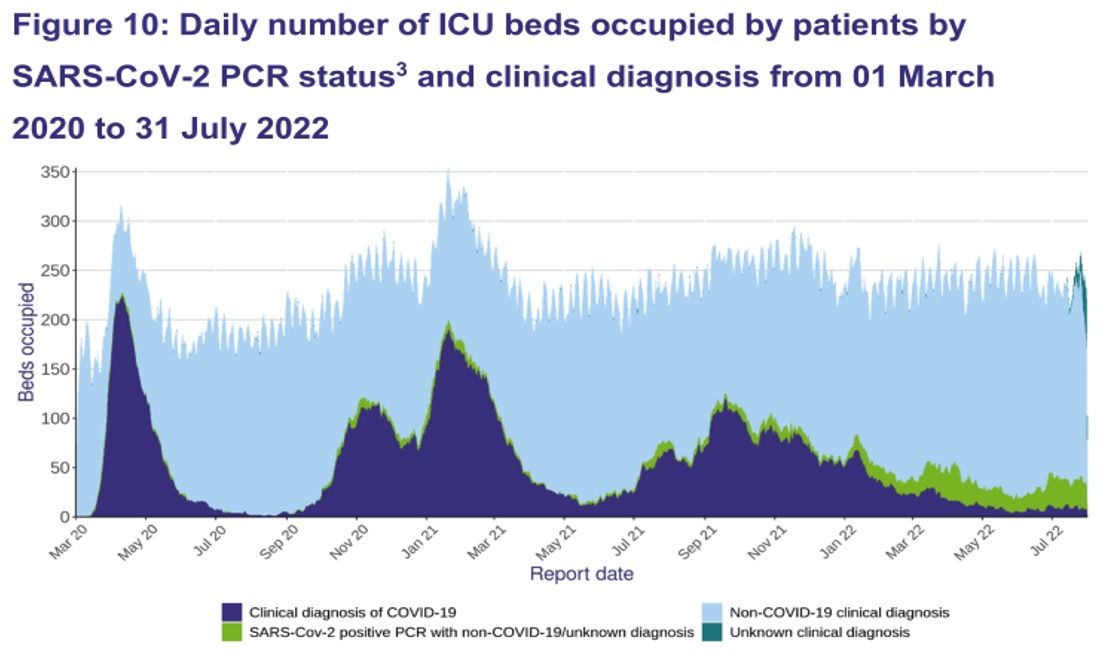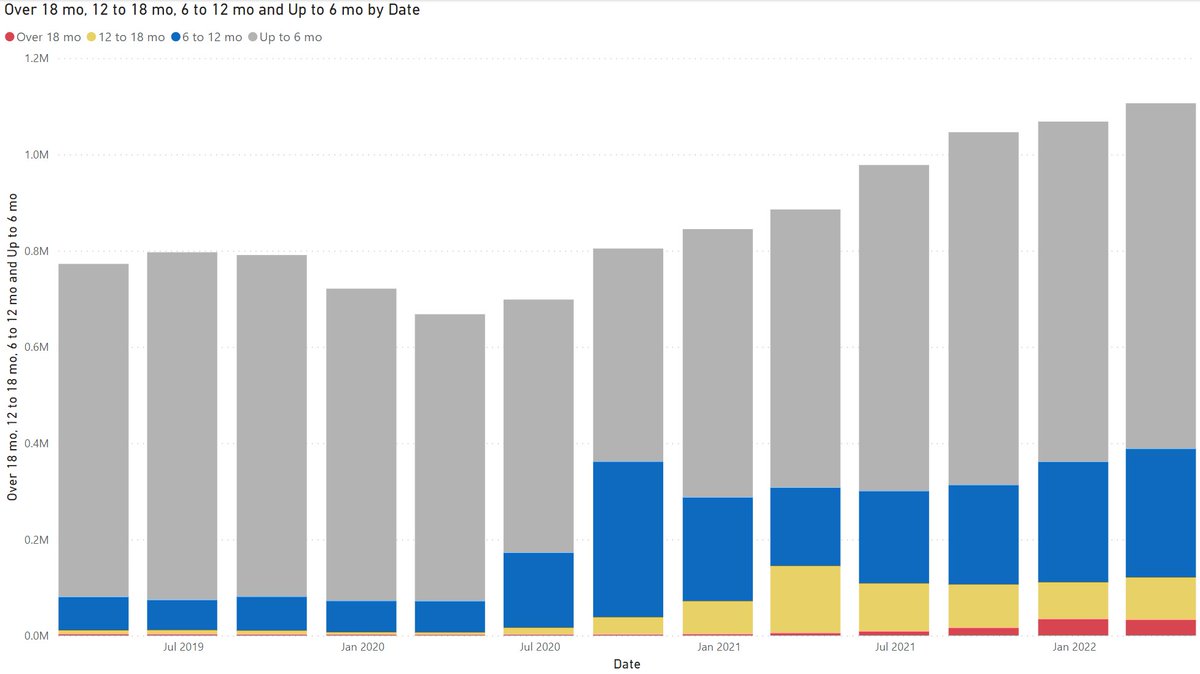Scotland: Cardiac data
Below the latest trend of cardiac attendances by Scottish Ambulance Service - this is *excess* above the 2018/19 norm.
Huge spike in summer, 500 ambulance calls per week above normal, mainly age 15-64. Was settling, then spike up again since late October.
Below the latest trend of cardiac attendances by Scottish Ambulance Service - this is *excess* above the 2018/19 norm.
Huge spike in summer, 500 ambulance calls per week above normal, mainly age 15-64. Was settling, then spike up again since late October.

Second is the ‘Out of hours’ cardiac calls. This is when someone’s GP is closed, but they need to call a doctor about heart problem - it goes to the out of hours service.
The 2018-19 trend is purple, and we have a huge excess in the 15-44 age group calling about cardiac issues
The 2018-19 trend is purple, and we have a huge excess in the 15-44 age group calling about cardiac issues

From the data we can clearly see *this is not normal” due to such excess, but we need to internalise that message? This. Is. Not. Normal. We should not see so many people - especially young people - encountering such issues synchonously en-masse.
• • •
Missing some Tweet in this thread? You can try to
force a refresh


